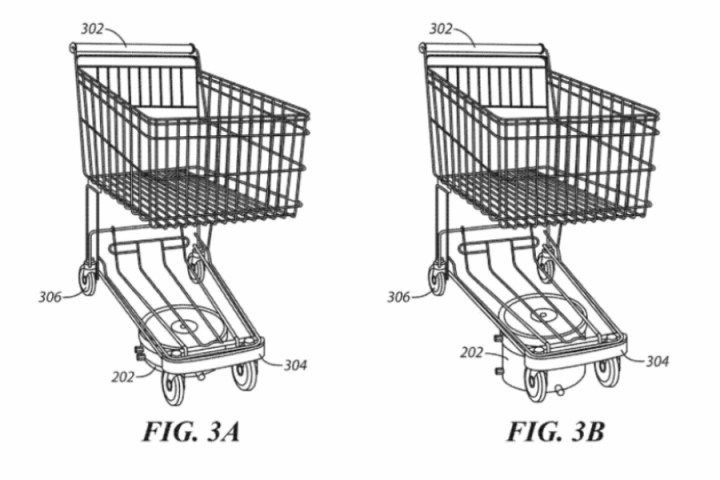
The patent details how the facility assistance systems could be implemented. The shopping carts would work with detachable motors, which would be equipped with multiple sensors and video cameras, and be controlled by a facility circuit system.
If a customer wanted a cart, for example, they could summon one through an app or an in-store kiosk. The nearest motor would then find the closest available cart, dock with it, and drive it to the customer’s location. At that point, the motor would detach and drive itself to a holding area for the next request.
The system could manage the entire shopping cart inventory, moving them around as needed. It would replace the jobs of the cart retrievers who currently walk to shopping cart corrals and move long trains of empty carts back to store entrances.
The patent also details components of an inventory tracking and parcel retrieval process from a multitiered inventory system. The details lay out the possibilities of the containers working with a robotized inventory system. Carts could be transported to specific locations where items could be placed, swept, or blown into the cart.
According to CNN Money, Walmart has not announced implementation plans or pilot programs for self-driving cart systems. Like many patents, it could take years before the technology is developed, if ever. As robotics applications are increasingly developed and used in manufacturing, warehousing, and large retail operations, Walmart is getting ready.



